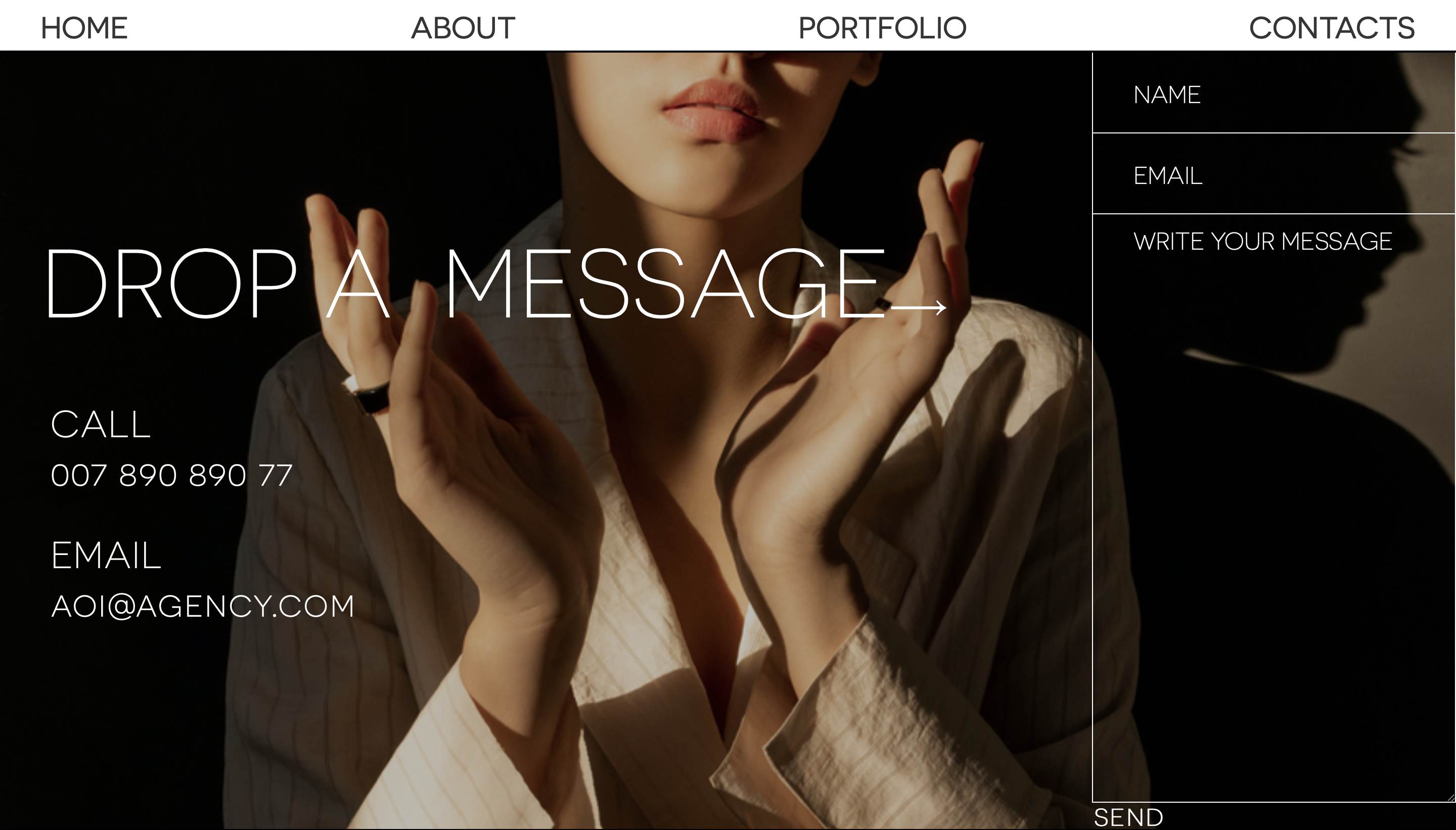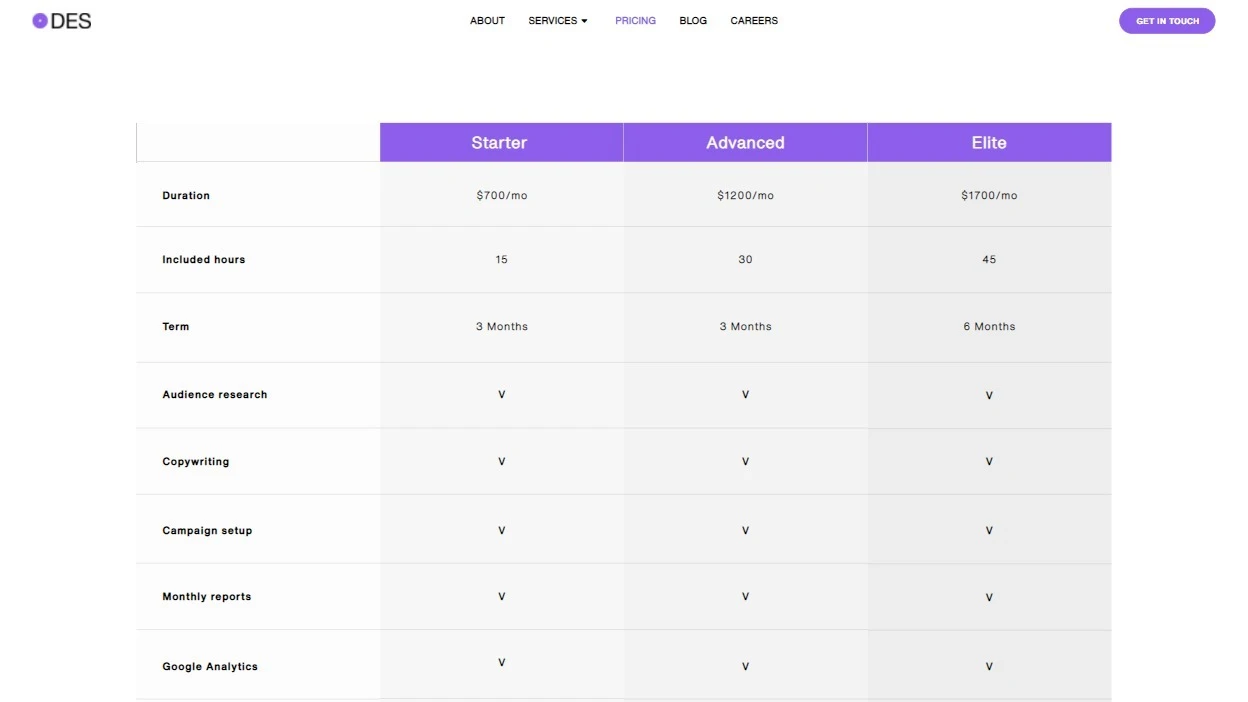If you deliver creative or consultative services and are looking to start an agency business, look no further. The first thing you need to do is create an impressive, clean, and easy-to-understand website.
Agency website templates are all about design and cleanliness so that customers browsing for service providers can easily access your information from the homepage and get in touch.
Creating a Hero Section
The hero section is the first thing your clients will see when they click on your website, and it’s essential to use this section to create an excellent first impression. It should be visually appealing and contain content that summarizes what your agency does, with a clear call-to-action button. When creating a website for your agency, you should have a memorable tagline with your most crucial differentiator or value-add front and center. Do you offer guaranteed results? A free first consultation? What sets you apart?
Then you need to decide what action you want your visitors to take. Do you want to draw them deeper into your site, or would you like for them to get in touch right away so they can sign up for a free quotation? Before you decide, think about where your typical client would be in their decision-making process when they land on your site.

If you target small businesses that may never have used an agency before and are worried about the cost, you could direct them to a cost calculator. If they are likely evaluating several different agencies, you should steer them towards your About Us section or Contact page. If you have a great proposal or user guide, you could direct them to a Download page.
Don’t worry - when you build an agency site using templates, you can change things up to see which design or call to action gets the best response from your prospects.
The Header Section
In modern design, the entire space above the homepage fold is considered a header. Your header should be a navigation tool to 4-5 essential landing pages within your site, including a link to your services, portfolio, blog, and a contact form.
Services
Your Services section is a crucial part of your SEO strategy because it will help prospects find you online. You should list all of the services you offer and explain what they are to rank well. Again, it’s a good idea to provide a few lines of copy detailing each service on offer with a call-to-action button so that prospects can get in touch quickly. If the services are complex, it’s a good idea to create multiple service pages that explain what each service has to offer your clients.
Portfolio
If you are offering services in a highly visual or artistic field (e.g., graphic or web design, creative advertising campaigns, photography), you must place your recent work front and center when creating your own agency website on a portfolio page. You can link to websites you’ve created, designs or campaigns you’ve built, or simply your best work.
This page shouldn’t be copy-heavy. Let your designs do the talking. You could include short blurbs about the brief you’ve received or the client goals so that prospects can see the link between the work that you’ve done and the instructions you received.
If you don’t operate in a highly visual field, you can create a portfolio page with showcased case studies, client testimonials, or samples. Again, try not to be wordy on the landing page. Let clients click through for more information. List your clients’ names, the project name, and an image on the portfolio page instead.
Blog
Blogs are always a good idea. This is where you can include information you want to link to, like new developments, industry news, or opinion pieces from thought leaders in the agency to share on LinkedIn and other sites. Your blog is an excellent alternative to generating dozens of web pages for each separate topic you want to discuss. Instead, you can say what you want to say freely and in a long-form format. Blog is always a great tool to build up your SEO ranking and generate traffic to your page. Speaking of which, Ucraft offers a wide variety of professional, eye-catching templates that also include a built-in blog section, so consider that when deciding to build your agency template.
Bear in mind that if you do decide to create a blog, you should update it regularly. An outdated blog creates an impression that you aren’t interested in your readers or aren’t paying attention to your website, which can lower trust in your brand. You don’t need to update your blog daily, but try to post a new blog once a week or twice a month. Don’t forget to share these posts on your social media pages!
Contact Form
How will clients get in touch with you? You should always have a prominent call to action button on your landing pages that link to this section. A good contact page contains your business information and preferably a form that visitors can fill in to get in touch with you. Remember to avoid requesting more information than is strictly necessary. No one wants to spend fifteen minutes completing a form just to receive a callback. Ask for a name, number, email address, and short commentary detailing their needs. If you have numerous service departments and offices, you can add a qualifier that will help you to direct clients to the right person. This can include a simple drop-down menu that lists your departments.

The Footer Section
When putting together your Footer, bear in mind that it will appear on every page. It needs to be attractive, easy to understand, and informative. Only place the most necessary information in your Footer, including an About Us section, Pricing, or Resource Hub page. (If you don’t update your blog regularly, you can link to it in the Footer).
You could include the following in your Footer:
About Us
Let companies know if you’ll be a good cultural fit in your About Us section. You can include details about your expertise, the size of your team, your ambitions, your projects, and your ethos.
Pricing
Not every business wants to publish its pricing upfront. However, you can include this here if you have set pricing like wedding photography packages or copywriting billed per word.

Partner Page
You can approach your agency Partner page in two ways. You can either highlight your business partners or investors that support your brand or share a list of your most prominent clients. Either option can increase the value of your brand and become an effective sales tool.
Your partner page should contain a short description and the logos of your most prominent partners.
Resource Hub
If you have great client resources like videos, downloadable material, press releases, or user guides, you need a resource hub that lists them. These resources can become a great lead generation and capturing tool by requiring that prospects complete a contact form in order to download or access the resource. Unlike your main contact form, you can flesh out this form a little more with requests for qualifying information.
Creating a Brand Look and Feel
Once you’ve decided on the website’s structure, you can start adding your own personal design twist to it. Your brand identity is essential because it will visually represent who you are and what you do. If you find yourself uncertain about making the best design choices, consider taking a moment to create a website with a professional to ensure that your online presence authentically represents your brand’s ethos. Think carefully about your brand personality. Personality types can include:
-
Serious and professional
-
Casual and quirky
-
Moody, vintage
-
Minimalistic
-
Humorous and informal
Your personality will dictate your branding choices, including the tone of your copy, your color scheme, and your fonts. Don’t forget your clients, though! If you are hoping to attract financial institutions like banks, you should probably opt for a serious and professional tone rather than quirky or humorous. If you are hoping to attract brands looking for clever advertising campaigns, you can be a little more creative and out-of-the-box.
The cooler the colors (blue, black, white, purple), the more standoffish and formal you will appear, while warmer tones (red, orange, yellow) communicate energy and passion. When choosing your fonts, stick to one or two at most. You should assign a role to each font (e.g., one for body text, one for headings) and experiment with the font weight to create a hierarchy within your copy.
Verdict
Now that you have all the tools to create an agency website of your own, you can get started right away! Ucraft offers a variety of professional website templates that you can use as a source of inspiration and as a solid foundation for creating a site that will convert customers from the start.
















